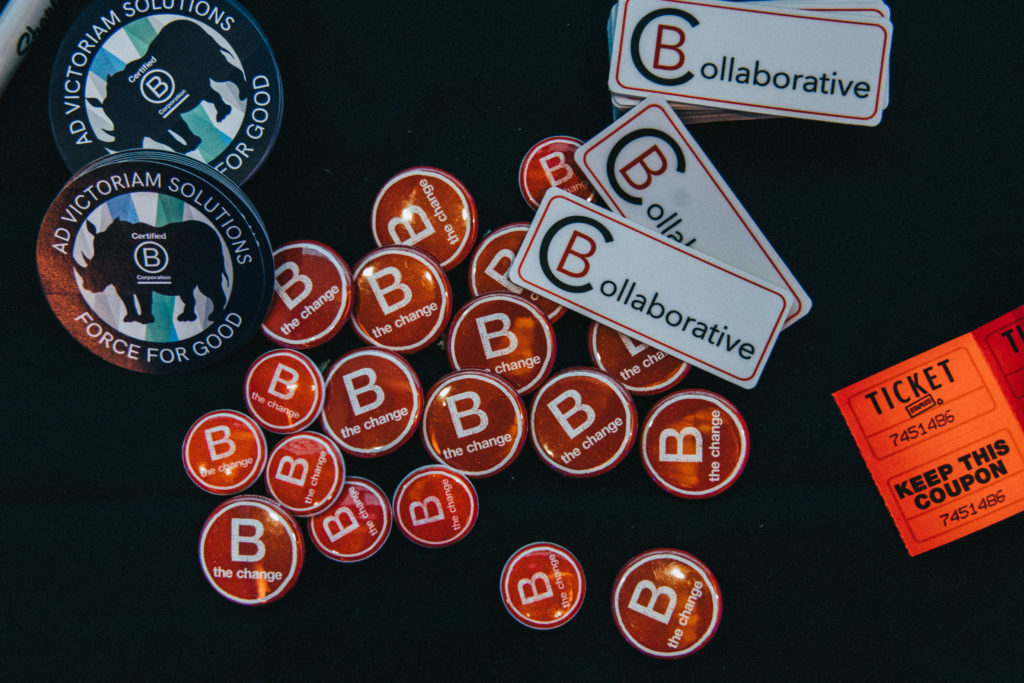
Environment in the B Impact Assessment
This section of the B Impact Assessment (BIA) measures and evaluates your company’s environmental footprint and the steps you’re taking to reduce it. It looks at the direct impact your company’s operations make on the climate, air, water, and biodiversity in the world around you and, if applicable, your downstream supply chain and distribution channels. This section rewards companies who are actively working to reduce their footprint through initiatives like the use of renewable energy, innovative production processes, and the local sourcing of supplies.
Getting started with the environmental section of the BIA
Before we talk strategy, you need to figure out what you’re consuming and how big your footprint is. After all, you can’t improve what you aren’t measuring. This is one of the best parts of completing the BIA–quantifying your current state. If you’re like most companies, you have no idea what your scope 3 emissions were last year.
Once you have the current state quantitatively defined, we can set goals and targets for reductions and use the B Impact Assessment for best practices to help you get there. Could you source more of your inputs locally? Could you rethink your packaging? What sort of home office virtual stewardship policy could we create? How much food waste could we divert from the landfill if we started composting?
There are an incredible number of ways you can start reducing your carbon footprint and the B Impact Assessment will get you started by defining your current state, creating company-wide environmental KPIs, and helping you implement policies, initiatives, and concepts that make a difference.
Examples of companies with high environmental scores
The environmental section sees a large variation in scores depending on the industry of the company. While companies that make things tend to have larger supply chains and greater opportunities to take actions to offset their footprints, companies of all shapes, sizes, and industries have made B Lab’s Environmental Best For The World list, which recognizes the top 5% of certified B Corps around the world.
One of the companies on this list is Dr. Bronner’s, one of the top-selling organic and fair trade soap and body care brands in the United States. Also making the list was Sokol Blosser Winery, whose goals are to produce delicious (and they are delicious) organic wines that are also environmentally sustainable. Another favorite of ours on the list is Chico Bags, a zero-waste company that specializes in ridding the world of one-time use products by creating reusable bags and to-go wear, including a heavy duty shopping tote made of recycled plastic bottles. Southern Energy Management, headquartered in Raleigh, NC, made the list for the work they’ve done to eliminate millions of carbon emissions with their green building, efficient energy, and solar services. Lastly, Rivanna Natural Designs designs and produces planet-friendly awards, plaques and company gifts made from recycled, upcycled, or responsibly sourced materials.
What will my company gain from improving our environment?
Not only will improving your environment structure put you on the right track to becoming B Corp Certified, but it will also help reduce your costs, increase the retention of employees while attracting new ones, and improve the reputation of your business.
Concrete proof in the era of greenwashing
Whether they have a plan or not, and whether their intentions are authentic or not, every single company has their marketing team showcasing their commitment to the environment. By working through the environment section of the BIA, you’ll have concrete and quantifiable numbers to share, including the footprint you’ve reduced and the actions you took to get there. It’s a great way to do good and differentiate yourself from the competition.
Reduce costs
You can reduce the costs your business makes simply by reducing the amount of resources you use. Replacing business travel with virtual meetings, switching to motion sensored light fixtures, and replacing paper documents with electronic versions all save money and decrease your carbon footprint. .
Recruit and retain the next generation of workers
Gen Z has arrived in the workforce and desperately wants to work for a company that is actively working to “do no harm” when it comes to the environment. According to a 2021 research study by Pew, 67% of Gen Z and 71% of millennials stated that climate should be our top priority. By doing the right thing, and proving that you’re doing it, you’ll recruit and retain top talent entering the workforce.
